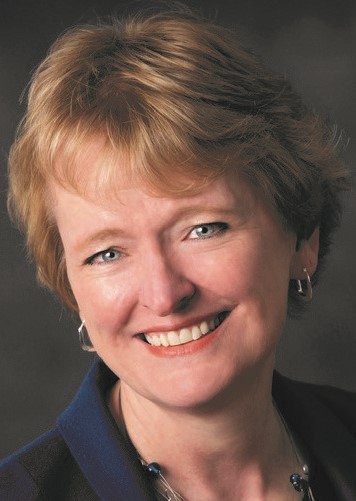Originally Posted by the Catholic Herald….
Approximately $129 billion of the latest $1.9 trillion coronavirus relief plan goes directly to K-12 education. Districts have until late 2024 to spend the funds, which should be received within a few months. Of those funds, the state of Wisconsin estimates $67 million from the recent March 11 Emergency Assistance for Nonpublic School (EANS) bill will be distributed statewide to private schools. Each governor is responsible for a certified process to provide services or assistance to eligible non-public schools.
Wisconsin’s work with EANS continues with input from the Wisconsin Council of Religious and Independent Schools (WCRIS), and 11 WCRIS leaders are meeting with the Cooperative Educational Service Agency (CESA) as part of an EANS Stakeholder group. Representing local Catholic Schools are Donna Bembenek, President, Catholic Memorial High School; Brian Couch, President, Seton Catholic Schools; and Lori Saqer, Chief Financial Officer, Messmer Catholic Schools, Inc.

While the funds are much needed in area Catholic Schools, getting access to the money is challenging, said Bembenek.
“Schools needed to apply by April 12, and when the pool of schools is confirmed, the amount per school will also be confirmed. An estimate of the potential funds per school has already been shared with each school,” she said. “The governor has tasked CESA 6 (the agency serving the Archdiocese of Milwaukee) with managing the EANS program for Wisconsin. No federal funds can flow directly to religious schools so, with CESA 6 accepting those funds and managing the allocation, we abide by the federal rule.”
In early March, CESA 6 held a webinar, asking volunteers from around the state to serve on the stakeholder’s group. The group allows CESA 6 to receive needed feedback on issues in a more expedient manner, than trying to gather all the schools in the state, said Bembenek.
“The EANS funding, while important, is also very technical,” she said. “Catholic schools must be cautious in how they allocate EANS funds. There are very specific rules, even within the stated eligible funds. The challenge is that the law is still being understood and clarifications still being made.”
Included in the eligible expenses:
- Supplies to sanitize, disinfect, and clean school facilities;
- Personal protective equipment;
- Ventilation system improvements;
- Training and professional development for staff on sanitation, the use of personal protective equipment, and minimizing the spread of infectious diseases;
- Physical barriers to facilitate social distancing;
- Other materials and supplies to implement public health protocols;
- Leasing spaces to accommodate social distancing;
- COVID testing;
- Technology;
- Instructional plans, remote and/or hybrid learning, social distancing plans; and
According to Bembenek, WCRIS has done an excellent job in helping area Catholic schools, and CESA 6 is very responsive to their needs. The difficulty in receiving these funds lies with the legislation itself.
“WCRIS appealed to legislators for help with effectively using federal pandemic relief funds, specifically EANS funds, during a joint meeting recently of the Wisconsin Senate and Assembly Education Committees,” she said. “WCRIS Executive Director Sharon Schmeling told legislators the funds are so restricted by Congress they are virtually useless for solving real problems created by COVID-19 and for addressing the behavior guidelines required to keep students and staff safe.”
For example, one eligible expense is described as: improving ventilation systems, including windows or portable air purification systems. However, the funds cannot be used for capital improvements, such as windows. The funds can be used to pay someone to install the window, but not to purchase a window.
Another allowable expense allows for education technology for remote or hybrid learning, but the technology is technically owned by the public schools and could be recalled if not allocated for approved uses when the EANS funding cycle expires.
“Private schools across the state have been on the front lines of in-person instruction since August and were among the first brave educators to return students to the physical classroom. They raised money from their private sector, which has been under its own financial limitations through the pandemic, for laptops, personal protective equipment, hotspots, disposable lunch serving materials, plexiglass barriers, water bottle filling stations, hand sanitizer dispensers, and a million other things needed to safely return children to the physical classroom,” said Schmeling. “Their reward for this? Congress has made $77.4 million in EANS aid available that, for the most part, is totally inaccessible and largely unavailable to solve real problems the schools are facing with COVID-19.”
After hearing Schmeling’s testimony, Rep. Chuck Wichgers asked DPI how the problem could be addressed.
“DPI staff responded that the funds belonged to the governor and were controlled by rules set by congress,” explained Bembenek. “For that reason, WCRIS will be appealing to the state legislature’s Joint Finance Committee to replace the federal funds with state tax dollars, which are less restrictive.”
Bembenek said one of the goals of serving on the stakeholders group is to save schools from having to return equipment or pay back funds if they were not properly allocated.
“There is a lot of conflicting information from the government, and different states are interpreting the same law differently,” she said.
Lori Saqer said she has learned much since working with the schools ESSER (Elementary and Secondary School Emergency Relief) and the GEER (Governors Emergency Education Relief) funds allocation.
“It is my sincere hope the process might be simpler and more streamlined for the private schools that will be using EANS funds. Also, I hope to help all schools to be provided with the ability to use the funds in a way that best suits the needs of their students,” she said. “The regulations are the difficult part of the process. They are numerous and onerous. Using the funds is cumbersome but getting easier with enough planning. I do believe that there is room for improvement and thankful that I have been given an opportunity to be a part of that.”
